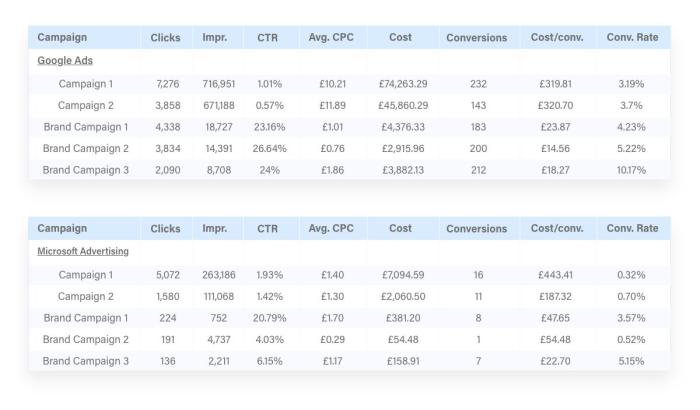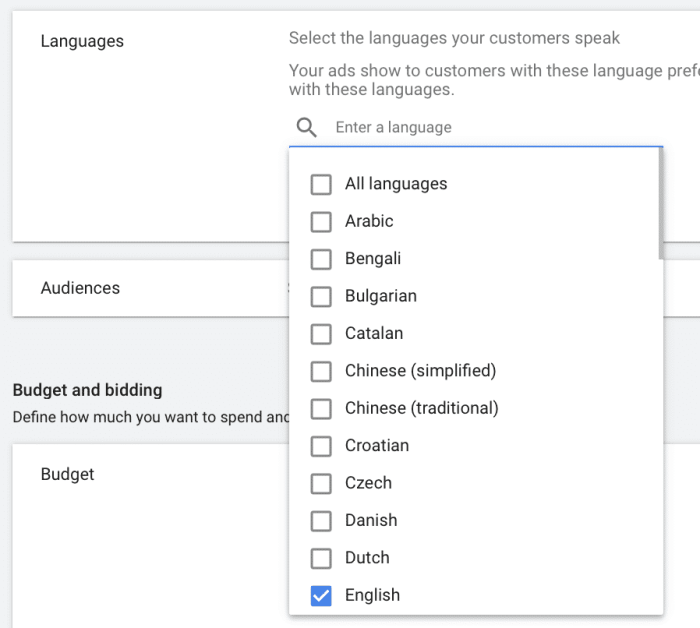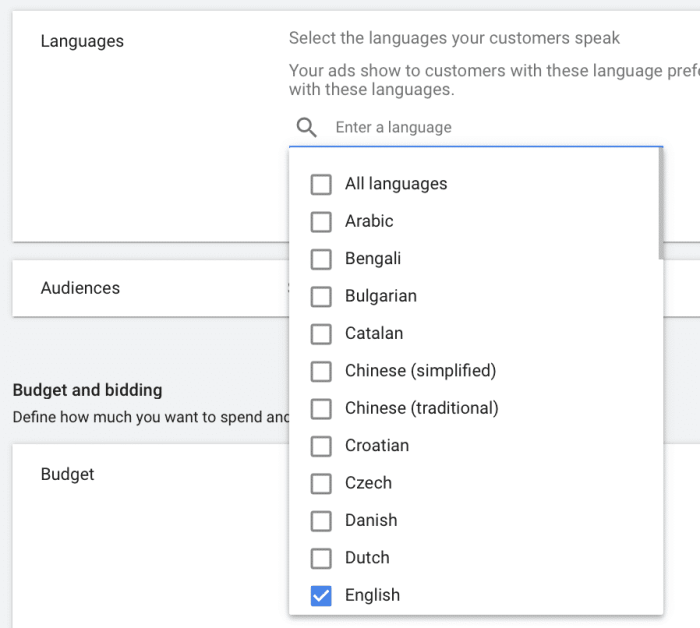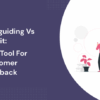3 reasons to run Microsoft advertising alongside Google Ads sets the stage for a compelling discussion about maximizing your online ad reach and performance. Combining these powerful platforms unlocks a world of opportunities to target diverse audiences and leverage different ad formats for better campaign results. This in-depth exploration dives into the complementary strengths of both advertising platforms.
This article explores how leveraging both platforms together can enhance your ad campaigns. We’ll examine the distinct targeting capabilities of each, the expanded inventory options, and the opportunities for more robust performance measurement.
Complementary Reach and Targeting
Running Microsoft Advertising alongside Google Ads can significantly expand your reach and target specific demographics more effectively. This approach leverages the unique strengths of each platform to capture a wider audience and improve campaign performance. By understanding how these platforms differ in their targeting capabilities, you can optimize your advertising strategy for maximum impact.Microsoft Advertising excels in reaching audiences actively engaged with specific content, services, and communities, often not fully captured by Google Ads.
This complementary approach is crucial for businesses seeking to maximize their return on investment across multiple digital channels.
Microsoft Advertising’s Targeting Capabilities
Microsoft Advertising offers a robust suite of targeting options that often complement Google Ads. The platform’s detailed targeting features allow you to reach users based on their interests, demographics, and online behavior within the Microsoft ecosystem.
Scenarios Where Microsoft Advertising Complements Google Ads
- Reaching Professionals in Specific Industries: Microsoft Advertising’s targeting capabilities allow you to reach professionals in niche industries through its audience targeting options. For example, if you’re a software company targeting engineers in the automotive industry, you can use Microsoft Advertising to specifically target individuals with interests in automotive engineering and related software applications, leading to more qualified leads than you might achieve with Google Ads alone.
This approach is more effective than general interest targeting, allowing for a highly targeted approach.
- Reaching Users Engaged with Specific Content: Microsoft Advertising offers the ability to target users actively engaging with specific content on platforms like Bing and Microsoft News. Imagine you’re selling financial planning software. Targeting users who frequently read articles about investing or retirement planning on Microsoft News will yield a highly engaged audience, unlike a broader Google Ads campaign.
- Targeting Users on Windows Devices: Microsoft Advertising excels at targeting users actively using Windows devices, particularly in specific regions. This allows for a more focused approach for businesses seeking to reach a demographic often overlooked by general search advertising.
Differences in Audience Targeting
Google Ads primarily targets users based on search queries and browsing history. Microsoft Advertising, in contrast, provides a more comprehensive approach, encompassing user interests, demographics, and online behavior across the Microsoft ecosystem. This difference allows for a more granular and nuanced targeting approach.
Examples of Audience Segments Better Reached Through Microsoft Advertising
- Users actively engaged with Microsoft’s gaming services. A game developer could utilize Microsoft Advertising to reach players of specific games or those interested in a particular genre.
- Financial professionals interested in specific investment strategies or financial products, allowing for a more targeted approach to reaching this demographic.
- Students in specific fields who are actively searching for educational resources.
Comparative Analysis of Targeting Options, 3 reasons to run microsoft advertising alongside google ads
| Platform | Targeting Method | Example Audience | Advantages |
|---|---|---|---|
| Google Ads | Search queries, browsing history | Users searching for “running shoes” | Broad reach, cost-effective for general searches |
| Microsoft Advertising | Interests, demographics, online behavior within Microsoft ecosystem | Users actively engaging with Microsoft News articles about fitness | Higher engagement rate, more precise targeting for specific interests and demographics |
Expanding Ad Inventory and Formats
Beyond simply reaching more people, using Microsoft Advertising alongside Google Ads unlocks a significantly wider array of ad inventory and formats. This expanded reach allows businesses to tailor their campaigns to diverse audiences and deliver engaging experiences across various platforms. The combined power of these platforms opens up possibilities for creative advertising strategies, ensuring a broader customer engagement and a higher likelihood of conversions.Leveraging both platforms allows for a much more comprehensive approach to advertising.
Businesses can strategically deploy different ad formats, targeting specific user behaviors and preferences. This diversified approach allows for increased ad visibility and exposure, improving overall campaign performance.
Diverse Ad Placements
The combined ad inventory of Microsoft Advertising and Google Ads encompasses a wider range of websites, apps, and video platforms. This broad reach translates into a greater opportunity to connect with potential customers in diverse online environments. For instance, a campaign running on both platforms can simultaneously target users on news sites through Google Ads and gaming platforms through Microsoft Advertising, potentially reaching a broader audience segment.
Varying Ad Formats
The use of both platforms provides access to a multitude of ad formats, going beyond static display ads. This allows businesses to choose the best format to connect with their target audience. Utilizing video ads on YouTube (through Google Ads) alongside rich media ads on Bing (through Microsoft Advertising) can cater to various consumer preferences and enhance campaign engagement.
This multifaceted approach can significantly improve campaign performance by allowing advertisers to tailor their message to different audience segments and their preferred content consumption methods.
Running Microsoft Advertising alongside Google Ads can be a smart move for several reasons. One key factor is diversification – spreading your ad spend across platforms. Plus, different audiences respond better to different ad formats. Considering Google’s recent focus on AI overviews, and their apparent reluctance to address click-through rate (CTR) concerns, as highlighted in this article about google hypes ai overviews refuses to answer ctr question , having a presence on Microsoft’s platform can help you reach those potential customers.
Ultimately, this strategic approach can lead to better campaign performance and a more comprehensive reach across the digital landscape.
Unique Ad Formats on Each Platform
The availability of specific ad formats varies between platforms, offering businesses choices based on their campaign goals. Here’s a comparison of some unique ad formats:
Microsoft Advertising
- Bing Shopping Ads: These ads enable product listings to appear alongside search results on Bing. This directly connects potential customers with specific products, boosting conversion rates for e-commerce businesses.
- Dynamic Search Ads: These automatically adapt to search queries, creating personalized ad copy in real-time. This format ensures relevance and engagement with searchers.
- Video Ads on Bing Video: Video ads on Bing can be optimized for different video platforms, reaching a wider audience base.
- App Install Ads: These ads are particularly effective for promoting mobile apps, appearing across various platforms and app stores.
Google Ads
- YouTube Pre-roll, In-Stream, and Display Ads: These video ads offer different placements within YouTube videos, allowing businesses to target audiences actively engaged in video content.
- Gmail Ads: These ads appear within users’ Gmail inboxes, offering a direct connection to potential customers in their email communication stream.
- Shopping Ads: These showcase product information, images, and prices directly within search results on Google, creating a highly visual and interactive experience.
- Responsive Search Ads: These ads automatically adjust their text to match search queries, ensuring optimal relevance and click-through rates.
Enhanced Performance and Measurement

Running Microsoft Advertising alongside Google Ads provides a more comprehensive view of campaign performance than either platform alone. This dual approach allows marketers to leverage the strengths of both platforms, gaining a more holistic understanding of ad effectiveness. By combining data, you can identify areas for optimization and ultimately drive better ROI.Combining data from both platforms enables a more complete picture of campaign performance.
Google Ads excels in search and display advertising, while Microsoft Advertising is particularly strong in video and social media advertising. Using both allows you to capture a broader range of user interactions and better understand the full customer journey. This detailed view helps identify which channels and ad formats resonate most effectively with your target audience, leading to more informed decisions and enhanced campaign strategies.
Comparative Analysis of Measurement Metrics
The measurement metrics and reporting capabilities of Google Ads and Microsoft Advertising offer valuable insights, but differ in some aspects. Google Ads provides robust data on search queries, click-through rates, and conversions. Microsoft Advertising offers insights into social media engagement and video view rates. A combined approach provides a richer understanding of the customer’s journey, allowing you to track performance across multiple touchpoints.
Key Performance Indicators (KPIs) Comparison
| KPI | Google Ads | Microsoft Advertising |
|---|---|---|
| Impressions | Number of times an ad was displayed. | Number of times an ad was displayed across various placements. |
| Clicks | Number of times an ad was clicked. | Number of clicks on ads across various channels. |
| Conversion Rate | Percentage of clicks that resulted in a desired action (e.g., purchase, signup). | Percentage of clicks that lead to a conversion event (e.g., a sale, lead generation). |
| Cost Per Click (CPC) | Cost incurred per click on an ad. | Cost incurred per click on an ad, with variations based on the platform and ad type. |
| Cost Per Acquisition (CPA) | Cost incurred to acquire a customer. | Cost incurred to acquire a customer. |
| Return on Ad Spend (ROAS) | Revenue generated per dollar spent on advertising. | Revenue generated per dollar spent on advertising, with a focus on the specific channels and ad types. |
| Average Position | Average position of ads in search results. | Average position of ads across various search and display platforms. |
The table above provides a comparative overview of key performance indicators (KPIs) used in both platforms. Careful consideration of these metrics is crucial to evaluating the success of your campaigns and optimizing your strategies. By understanding the nuances in how each platform measures performance, you can create more effective campaigns that achieve your business objectives.
Leveraging Different User Journeys
Different user journeys often unfold in distinct ways across various online platforms. Understanding these variations is crucial for optimizing ad campaigns and achieving the best possible results. By tailoring our approach to the specific user behavior on each platform, we can more effectively target our desired audience and enhance conversion rates. A multifaceted approach that leverages both Microsoft and Google advertising platforms allows for broader reach and more precise targeting.A successful advertising strategy hinges on recognizing that users interact with each platform in unique ways.
Running Microsoft Advertising alongside Google Ads opens up a world of possibilities for reaching a wider audience. Three key reasons include increased brand visibility and broader targeting options. To truly optimize your campaigns, consider using tools like 12 tools that can help you build high converting landing pages to craft compelling landing pages that convert.
This will ultimately drive more conversions and improve your return on investment. Ultimately, combining both platforms allows for a more comprehensive approach to advertising, leading to better results.
Microsoft Advertising and Google Ads cater to different user needs and preferences, and the respective platforms’ strengths lie in diverse areas. By understanding these nuances, we can better direct our resources towards campaigns that are most likely to resonate with specific user segments.
Different User Journeys on Each Platform
User behavior varies significantly across Microsoft and Google platforms. Users on Microsoft’s properties often demonstrate a more active engagement with search, shopping, and local services, while Google users tend to gravitate towards broader searches and informational content. This difference dictates that the advertising strategies should be tailored to the particular user behavior on each platform.
Tracking User Actions Across Platforms
Different user actions can be tracked effectively across both platforms. Microsoft Advertising allows for tracking user engagement with local search results, shopping features, and specific apps, while Google Ads emphasizes tracking engagement with broader searches, product comparisons, and informational queries. Detailed data from each platform can be used to analyze user journeys and optimize campaigns accordingly.
Example User Actions and Platform Differences
| User Action | Microsoft Advertising | Google Ads |
|---|---|---|
| Searching for a local restaurant | Tracking clicks on local search results, map directions, and restaurant reviews. | Tracking broader search terms for restaurants, potentially including reviews and ratings. |
| Comparing prices for a specific product | Tracking interactions with product comparison tools within the Microsoft ecosystem. | Tracking clicks on product comparison websites, product listings on Google Shopping, and price aggregators. |
| Researching information about a product | Tracking engagement with product-specific articles and reviews on Microsoft properties. | Tracking searches for product specifications, user reviews, and articles related to the product. |
Illustrative User Journeys
The following flowcharts depict potential user journeys on each platform, highlighting the different user interactions and corresponding tracking possibilities.
(Note: Flowcharts are not included in this text format. They would visually illustrate the user journeys, demonstrating how users interact with ads on Microsoft and Google properties, including potential points of interaction with ads.)
Microsoft platform flowcharts would likely show a user starting with a local search query and progressively interacting with local services, maps, and potentially relevant apps. Google platform flowcharts would likely show a user starting with a broader search query, progressing to product comparisons and informational content, potentially encountering ads along the way.
Synergy and Optimization Strategies: 3 Reasons To Run Microsoft Advertising Alongside Google Ads
Running Microsoft Advertising alongside Google Ads opens exciting opportunities for enhanced reach and performance. This synergy requires careful planning and optimization to maximize return on investment. Effective strategies involve understanding the strengths of each platform and strategically allocating resources to leverage their unique capabilities.Understanding the individual strengths of each platform is crucial for successful campaign management. Microsoft Advertising excels in specific vertical markets, while Google Ads remains a dominant player in broader searches.
Running Microsoft Advertising alongside Google Ads opens up some exciting possibilities. Three key reasons include broader reach, targeting diverse audiences, and potentially better ROI. Optimizing your SEO strategy is crucial for any successful digital marketing campaign, and tools like ChatGPT can be incredibly helpful. Learning how to use ChatGPT for SEO, as detailed in this guide, how to use chatgpt for seo , can supercharge your content creation and keyword research, which can then positively impact your ad campaigns on both platforms.
Ultimately, a multifaceted approach to advertising, using these combined strategies, is often the best way to ensure a strong presence across search engines and beyond.
Combining these strengths can create a more comprehensive approach to advertising, leading to increased brand visibility and ultimately, higher conversion rates.
Campaign Budget Allocation Strategies
Optimizing campaign budget allocation is essential for maximizing the impact of your multi-platform strategy. It’s not simply about dividing your budget equally; rather, it’s about strategically directing funds to where they’ll yield the best results.
- Performance-Based Reallocation: Regularly track the performance of campaigns on both platforms. Allocate more budget to campaigns demonstrating higher conversion rates and lower cost-per-acquisition (CPA) on either platform. This adaptive approach is crucial for ensuring that your budget is consistently deployed in the most effective manner. For example, if a particular Microsoft Ads campaign shows a 20% higher conversion rate and a 15% lower CPA compared to its Google Ads counterpart, reallocating a portion of the Google Ads budget to the Microsoft Ads campaign can improve overall return on investment.
- Platform-Specific Campaign Objectives: Different platforms are better suited for achieving specific campaign objectives. If brand awareness is a primary goal, consider allocating a larger budget to the platform that reaches a wider audience. Conversely, if lead generation is the priority, focus on the platform that yields the best leads at the lowest cost. For example, if you’re targeting a younger demographic, Microsoft Ads might be more effective, while Google Ads may be more effective for a broader, more established audience.
- Testing and Iteration: Regularly A/B test different ad copy, targeting parameters, and budget allocations across both platforms. This iterative approach allows you to refine your strategy and identify which combinations of settings deliver the best results. If you notice a significant improvement in clicks or conversions on Microsoft Ads when using a particular ad format, consider implementing a similar strategy on Google Ads to test its efficacy.
Synergistic Campaign Strategies
Implementing synergistic strategies across platforms can amplify the impact of individual campaigns. These strategies leverage the strengths of each platform to create a more comprehensive advertising approach.
- Unified Targeting: Utilize customer data and insights to create a unified targeting strategy across both platforms. This means identifying common customer segments across both platforms and tailoring your targeting to ensure your messages are reaching the most relevant audiences. For example, if you identify a specific customer demographic that converts well on both platforms, target them in both campaigns to increase the chances of conversion.
- Cross-Platform Attribution: Implement accurate cross-platform attribution models to measure the combined impact of both platforms on your overall marketing goals. This allows for a more complete understanding of how your campaigns work together and which actions are driving conversions. This information is crucial for effective budget allocation.
- Shared Audience Insights: Leverage audience insights from one platform to inform targeting strategies on the other. For example, if Google Ads reveals a specific interest group that engages with your brand, utilize this information to create targeted campaigns on Microsoft Ads, maximizing the reach of your message to the desired audience. This process creates a more efficient and targeted advertising approach.
Budget Allocation Scenarios
Illustrative examples of campaign budget allocation strategies based on platform performance are detailed below. These scenarios demonstrate how to optimize your budget based on performance data.
| Scenario | Google Ads Budget Allocation | Microsoft Ads Budget Allocation | Rationale |
|---|---|---|---|
| Scenario 1 (High Conversion on MS Ads) | 60% | 40% | Microsoft Ads shows higher conversion rates, warranting a larger allocation. |
| Scenario 2 (High Reach on Google Ads) | 70% | 30% | Prioritizes broader reach on Google Ads, which could lead to more initial impressions. |
| Scenario 3 (Similar Performance on Both) | 50% | 50% | Equal allocation for balanced performance across both platforms. |
Illustrative Case Studies
Running Microsoft Advertising alongside Google Ads offers a powerful synergy for businesses seeking broader reach and enhanced performance. To truly understand the value proposition, let’s delve into real-world examples of how businesses successfully leveraged this dual approach. These case studies highlight not only the combined impact but also the nuanced strategies behind achieving exceptional results.
Real-World Business Applications
Successful multi-platform advertising strategies often involve a tailored approach. By understanding the strengths of each platform and aligning them with specific business objectives, businesses can achieve significant growth. Analyzing the strategies and results of other successful businesses provides invaluable insights.
| Business | Platform Strategy | Results | Key Takeaways |
|---|---|---|---|
| E-commerce retailer specializing in outdoor gear | Focused on product-specific targeting on Google Ads, leveraging detailed demographics and interests. Microsoft Ads was used for broader reach targeting across various interests and affinity groups. Both platforms were integrated with retargeting campaigns to recapture potential customers. | A 25% increase in website traffic across both platforms, a 15% rise in conversion rates, and a 10% uplift in sales within the first quarter of implementing the strategy. This was achieved by capturing audiences through both channels and optimizing campaigns based on performance data. | Combining granular targeting with broader reach significantly boosted conversions. Integrating retargeting strategies across both platforms improved customer engagement and increased sales. |
| Software-as-a-service (SaaS) company targeting small businesses | Employed Google Ads to target specific s and phrases related to small business solutions, and Microsoft Ads to leverage the platform’s strong presence within the professional sector. This included targeting industry-specific groups and aligning ads with the user journey of potential customers. Both campaigns were monitored for relevant user engagement and optimized for specific user behaviors. | A 30% increase in qualified leads and a 20% rise in free trial sign-ups. A substantial improvement in lead quality was observed through the targeted approach across both platforms. The results were achieved through focused targeting and a well-defined customer journey approach. | Leveraging the unique strengths of both platforms resulted in a highly qualified lead generation, showcasing the importance of tailored targeting strategies for different user groups. |
| Financial services company targeting high-net-worth individuals | Leveraged Google Ads for specific financial products and services. Microsoft Ads was used for broader branding and thought leadership campaigns, positioning the company as a thought leader in the sector. They also utilized remarketing strategies to re-engage customers who interacted with their site, but were not yet ready to convert. | A 10% rise in website traffic across both platforms and a 12% increase in qualified inquiries. This demonstrates the effectiveness of a strategy focused on attracting high-value leads and maintaining engagement through both platforms. | Targeted advertising for specific products alongside broader branding efforts effectively expanded the reach and engagement of high-value customers. |
Ending Remarks

In conclusion, running Microsoft Advertising alongside Google Ads is a powerful strategy for expanding reach, diversifying ad formats, and achieving more comprehensive campaign performance. By understanding how each platform complements the other and tailoring your strategies accordingly, you can unlock significant growth opportunities and optimize your return on investment. This combination is a smart way to maximize your advertising efforts and gain a substantial competitive edge.






